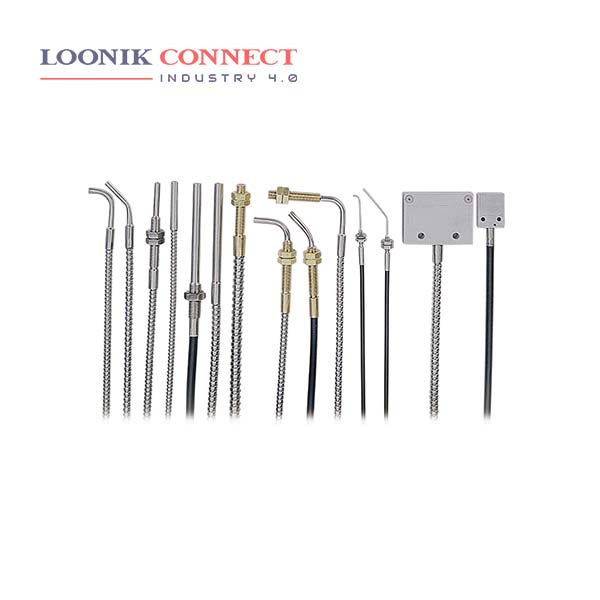Our Glass Fiber Optic Cables contain multiple strands of very thin glass fiber that are bundled together in a flexible sheath. They are typically more durable than plastic fibers and are able to withstand higher temperatures. Most cables are available with a choice of PVC or flexible stainless steel sheathing.High degree of chemical resistance Individual (transmitted beam) and bifurcated (reflective) fiber styles Wide range of specialty fiber optic cable tips available Standard cable length of 0.9 m (36 in.) Standard glass cable with stainless steel sheathing temperatures: -40…+260 °C (-40…+500 °F) Standard glass cable with PVC sheathing temperatures: -40…+96 °C (-40…+200 °F) Custom glass cables for high temperatures: -40…+482 °C (-40…+900 °F)
A glass fiber-optic cable consists of a bundle of glass fibers. Each individual glass fiber conducts light from the light source to the other end of the fiber by means of total reflection at a wavelength range from 500 nm to 900 nm. Glass fiber-optic cables should not be subjected to tensile forces.Sometimes light-absorbing (“dark”) glass is added between the fibers, to prevent light that leaks out of one fiber from entering another. This reduces cross-talk between the fibers.
Two main types of fiber glass exist: single mode (OS1, OS2) and multimode (OM1, OM2, OM3, OM4). Single mode fiber has a small light-carrying core of 8 to 10 microns (μm) in diameter. It is normally used for long distance transmissions with laser diode-based fiber optic transmission equipment.










